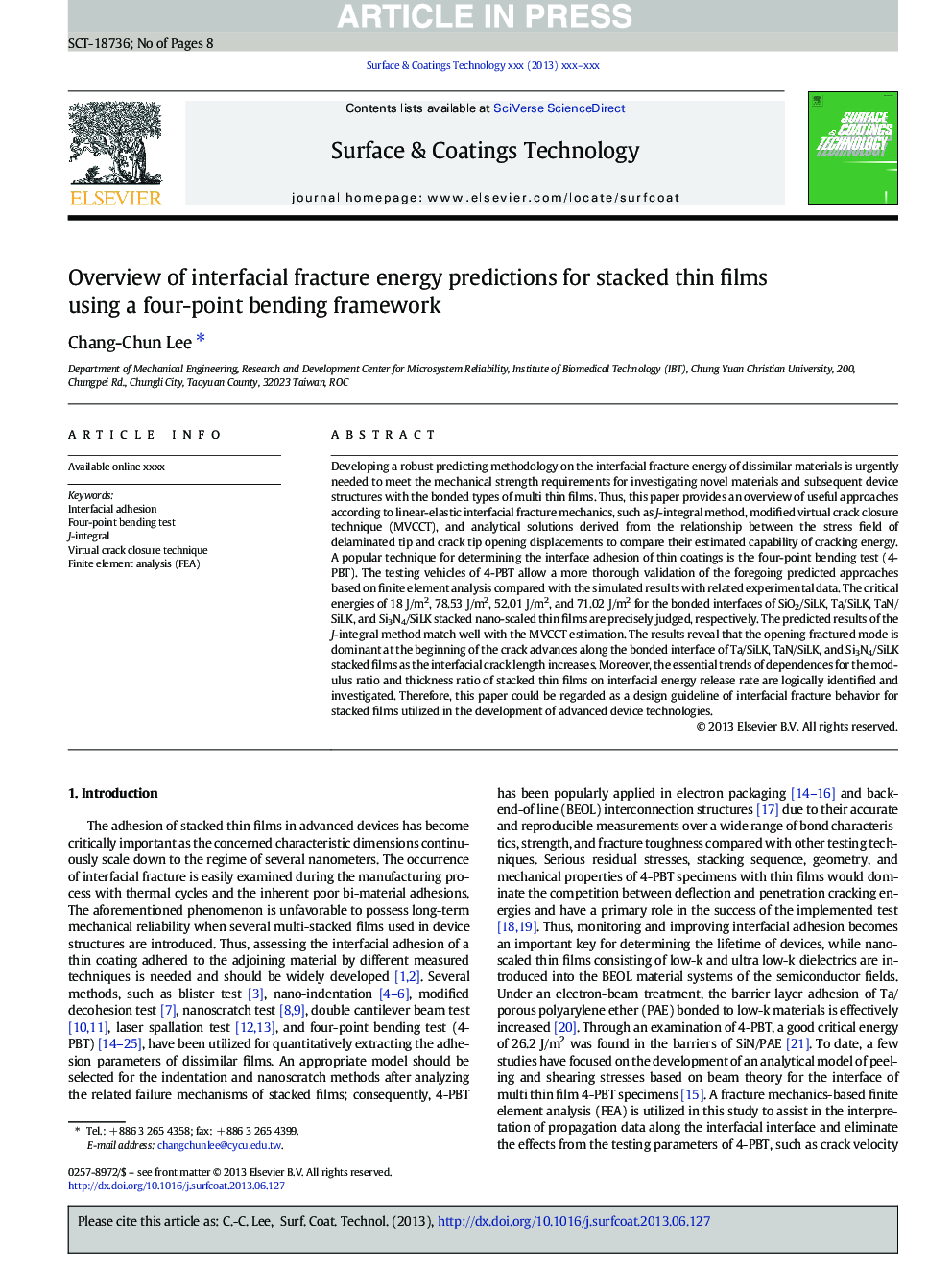| Article ID | Journal | Published Year | Pages | File Type |
|---|---|---|---|---|
| 8028763 | Surface and Coatings Technology | 2013 | 8 Pages |
Abstract
Developing a robust predicting methodology on the interfacial fracture energy of dissimilar materials is urgently needed to meet the mechanical strength requirements for investigating novel materials and subsequent device structures with the bonded types of multi thin films. Thus, this paper provides an overview of useful approaches according to linear-elastic interfacial fracture mechanics, such as J-integral method, modified virtual crack closure technique (MVCCT), and analytical solutions derived from the relationship between the stress field of delaminated tip and crack tip opening displacements to compare their estimated capability of cracking energy. A popular technique for determining the interface adhesion of thin coatings is the four-point bending test (4-PBT). The testing vehicles of 4-PBT allow a more thorough validation of the foregoing predicted approaches based on finite element analysis compared with the simulated results with related experimental data. The critical energies of 18Â J/m2, 78.53Â J/m2, 52.01Â J/m2, and 71.02Â J/m2 for the bonded interfaces of SiO2/SiLK, Ta/SiLK, TaN/SiLK, and Si3N4/SiLK stacked nano-scaled thin films are precisely judged, respectively. The predicted results of the J-integral method match well with the MVCCT estimation. The results reveal that the opening fractured mode is dominant at the beginning of the crack advances along the bonded interface of Ta/SiLK, TaN/SiLK, and Si3N4/SiLK stacked films as the interfacial crack length increases. Moreover, the essential trends of dependences for the modulus ratio and thickness ratio of stacked thin films on interfacial energy release rate are logically identified and investigated. Therefore, this paper could be regarded as a design guideline of interfacial fracture behavior for stacked films utilized in the development of advanced device technologies.
Keywords
Related Topics
Physical Sciences and Engineering
Materials Science
Nanotechnology
Authors
Chang-Chun Lee,
